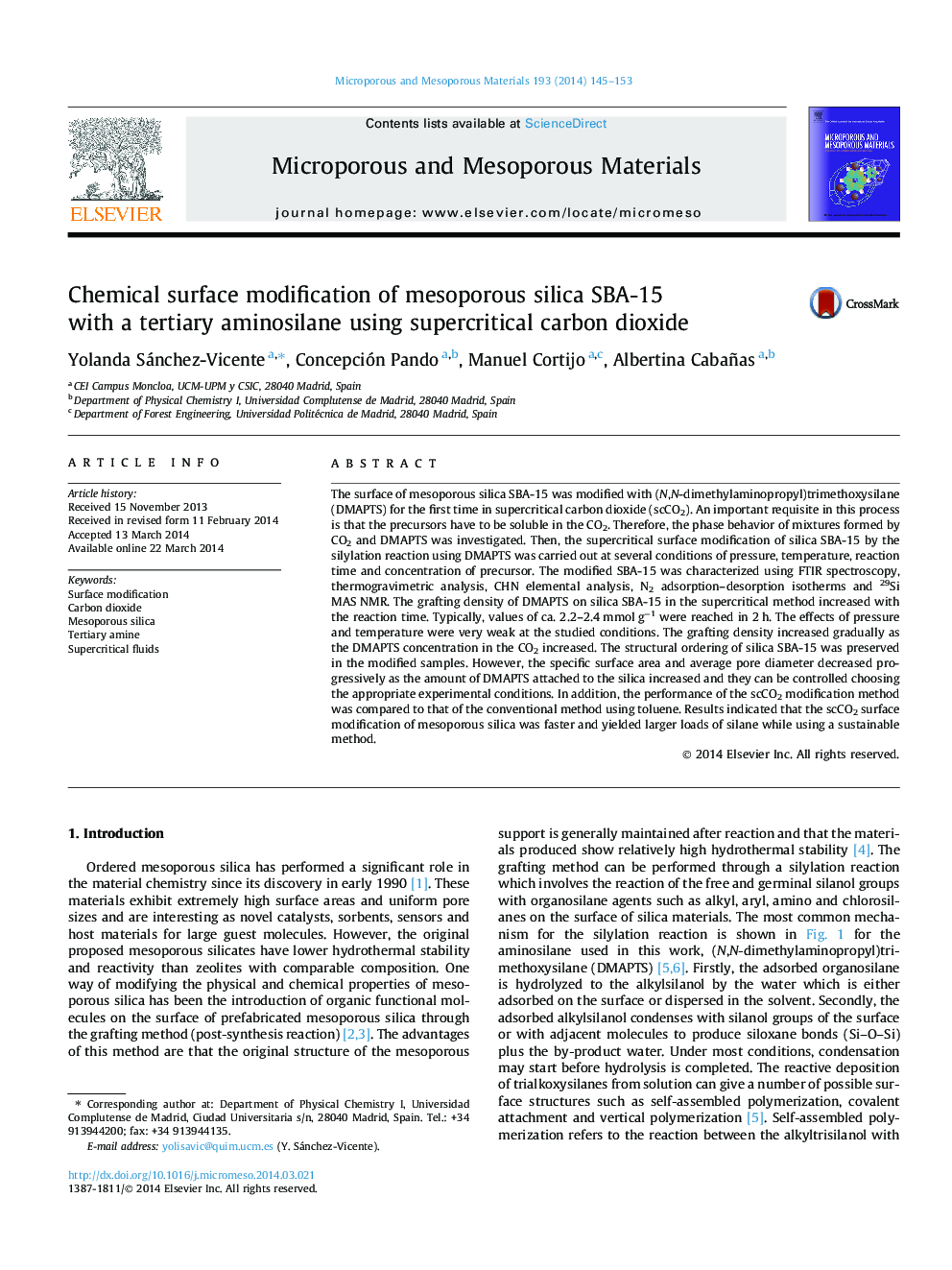| کد مقاله | کد نشریه | سال انتشار | مقاله انگلیسی | نسخه تمام متن |
|---|---|---|---|---|
| 73051 | 49042 | 2014 | 9 صفحه PDF | دانلود رایگان |

• The surface of mesoporous silica SBA-15 was modified with DMAPTS in scCO2.
• Grafting on silica SBA-15 increased with time and DMAPTS concentration.
• Surface area and pore diameter decreased as DMAPTS grafting increased.
• scCO2 process is faster and yields a higher grafting density than the method using toluene.
The surface of mesoporous silica SBA-15 was modified with (N,N-dimethylaminopropyl)trimethoxysilane (DMAPTS) for the first time in supercritical carbon dioxide (scCO2). An important requisite in this process is that the precursors have to be soluble in the CO2. Therefore, the phase behavior of mixtures formed by CO2 and DMAPTS was investigated. Then, the supercritical surface modification of silica SBA-15 by the silylation reaction using DMAPTS was carried out at several conditions of pressure, temperature, reaction time and concentration of precursor. The modified SBA-15 was characterized using FTIR spectroscopy, thermogravimetric analysis, CHN elemental analysis, N2 adsorption–desorption isotherms and 29Si MAS NMR. The grafting density of DMAPTS on silica SBA-15 in the supercritical method increased with the reaction time. Typically, values of ca. 2.2–2.4 mmol g−1 were reached in 2 h. The effects of pressure and temperature were very weak at the studied conditions. The grafting density increased gradually as the DMAPTS concentration in the CO2 increased. The structural ordering of silica SBA-15 was preserved in the modified samples. However, the specific surface area and average pore diameter decreased progressively as the amount of DMAPTS attached to the silica increased and they can be controlled choosing the appropriate experimental conditions. In addition, the performance of the scCO2 modification method was compared to that of the conventional method using toluene. Results indicated that the scCO2 surface modification of mesoporous silica was faster and yielded larger loads of silane while using a sustainable method.
Figure optionsDownload as PowerPoint slide
Journal: Microporous and Mesoporous Materials - Volume 193, 15 July 2014, Pages 145–153